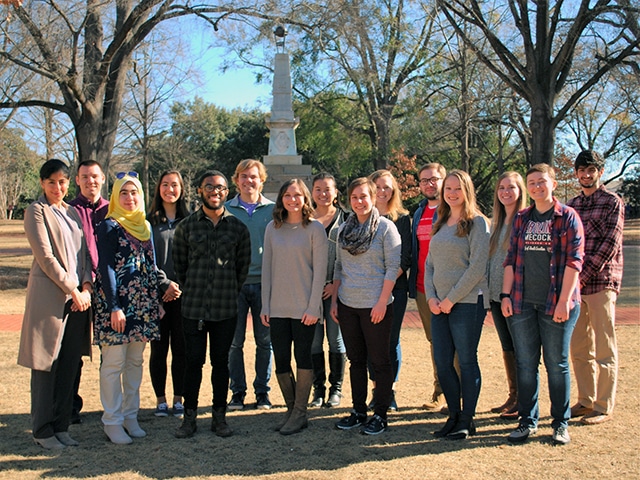According to the NIH National Center for Advancing Translational Sciences, translation is the process of turning observations in the laboratory, clinic, and community into interventions that improve the health of individuals and the public — from diagnostics and therapeutics to medical procedures and behavioral changes1. Some of the most successful translational science has stemmed from multi-disciplinary research collaborations. Consider sensor technology, which draws from the fields of biology, chemistry, physics, materials science, medicine, public health, engineering, environmental science, and more. Researchers often employ electrochemistry in their sensor design due to the analytical strength and sensitivity of electrochemical measurements. The exciting research from the Parry Hashemi lab at the University of South Carolina provides an excellent example of translational science at work.

Developing and Applying Electrochemical Sensors at the Nexus of Biology and the Environment
The Hashemi lab interests are in the etiology, diagnosis, and treatment of psychiatric diseases with specific foci on depression and autism spectrum disorder. By developing novel electrochemical tools to measure the extracellular chemistry of a spectrum of neurotransmitters and modulators, the Hashemi lab provides important insights into the fundamental mechanisms of neurotransmitter control. Electrochemistry, specifically fast scan cyclic voltammetry (FSCV), is applied to stem cell and in vivo models and electrochemical data is coupled with animal behavior, fluorescent imaging, biochemical assays and mathematical modeling. The Hashemi lab’s most known research accomplishments stem from discoveries into how in vivo serotonin chemistry is altered during depression and how antidepressants exert their actions on this modulator system. More recently the group has uncovered the importance of histamine in mood disorders. The lab’s tech focus is on developing ultramicroelectrode sensors for glutamate, GABA and trace metal ions.
The Hashemi lab, established in 2011, has published over twenty articles. These articles highlight the scientific diversity of the lab, and their contributions toward successful translational science from initial fast-scan cyclic voltammetry measurements of serotonin2, to more recent mathematical models of histamine synthesis and release3. Their body of highly-cited research is aiding other research and clinical practitioners in the fields of neurological and psychiatric disease and disorders. The accomplishments and contributions of this laboratory have not gone unnoticed. At the upcoming Pittcon conference in Orlando, FL, Dr. Hashemi will be honored with two awards:
- Society for Electroanalytical Chemistry (SEAC) Royce W. Murray Award (sponsored by Pine Research)
- Pittsburgh Conference Achievement Award
Be sure to congratulate the Hashemi lab if you see them at Pittcon – whether it is at the SEAC Reception/Dinner on Monday, 26 February or at any of the exciting neuroscience/electrochemistry sessions at Pittcon.
Tim Paschkewitz and Greg McCarty from Pine Research Instrumentation will be attending Pittcon this year and will be happy to meet with you. They will be found attending and presenting in Pittcon sessions and at the SEAC events. They are happy to chat with you about Pine Research neuroelectrochemistry products, such as their one, two, and just-announced four channel WaveNeuro FSCV potentiostat systems or new in-vitro flow cell.
[call_to_action color=”green” button_text=”Meet with Pine Research at Pittcon” button_url=”mailto:tpaschkewitz@pineresearch.com?subject=Pittcon%20FSCV%20Meeting%20Request” button_icon=”calendar” button_icon_position=”left” layout=”vertical”] Contact Tim and Greg to schedule time to chat about FSCV and how Pine Research can support your instrumentation needs.[/call_to_action]
References
- Translational Science Spectrum https://ncats.nih.gov/translation/spectrum (accessed Feb 14, 2018).
- Lama, R. D., Charlson, K. C., Anantharam, A., Hashemi, P. Ultra-fast Detection and Quantification of Brain Signaling Molecules with Carbon Fiber Microelectrodes. Anal. Chem. 2012, 84, 8096-101. DOI: 10.1021/ac301670h
- Best, J.; Nijhout, H. F.; Samaranayake, S.; Hashemi, P.; Reed, M. A Mathematical Model for Histamine Synthesis, Release, and Control in Varicosities. Theor. Biol. Med. Model. 2017, 14, 24. DOI: 10.1186/s12976-017-0070-9

